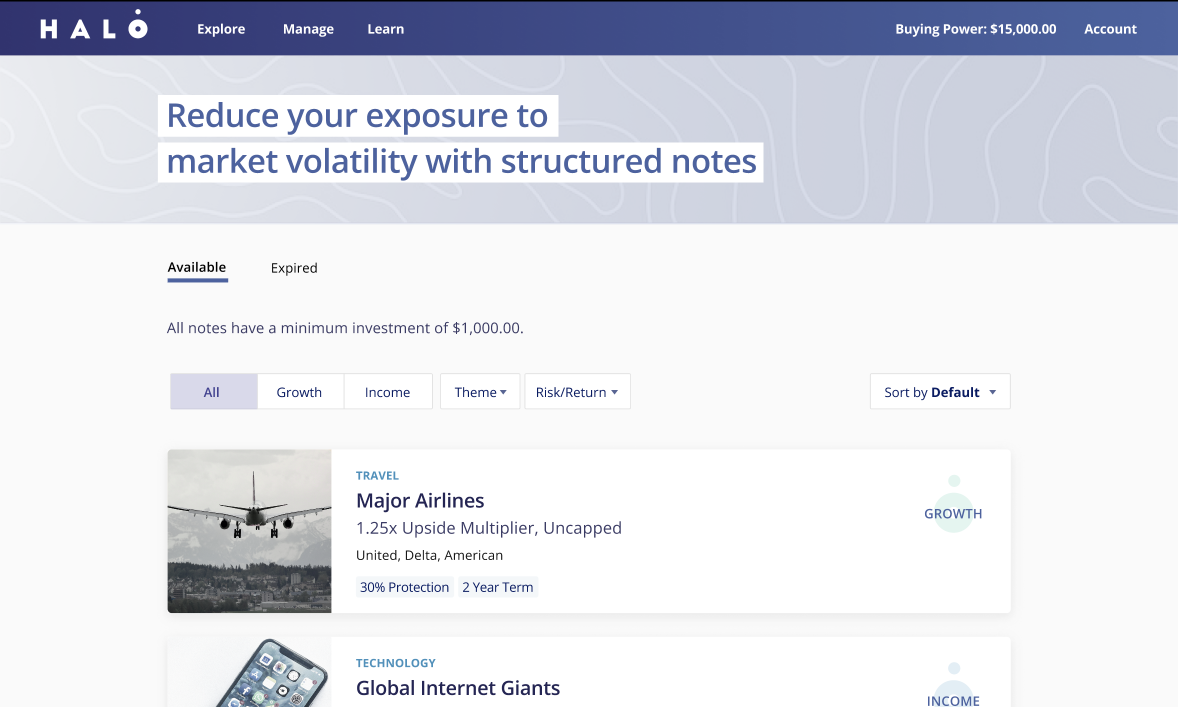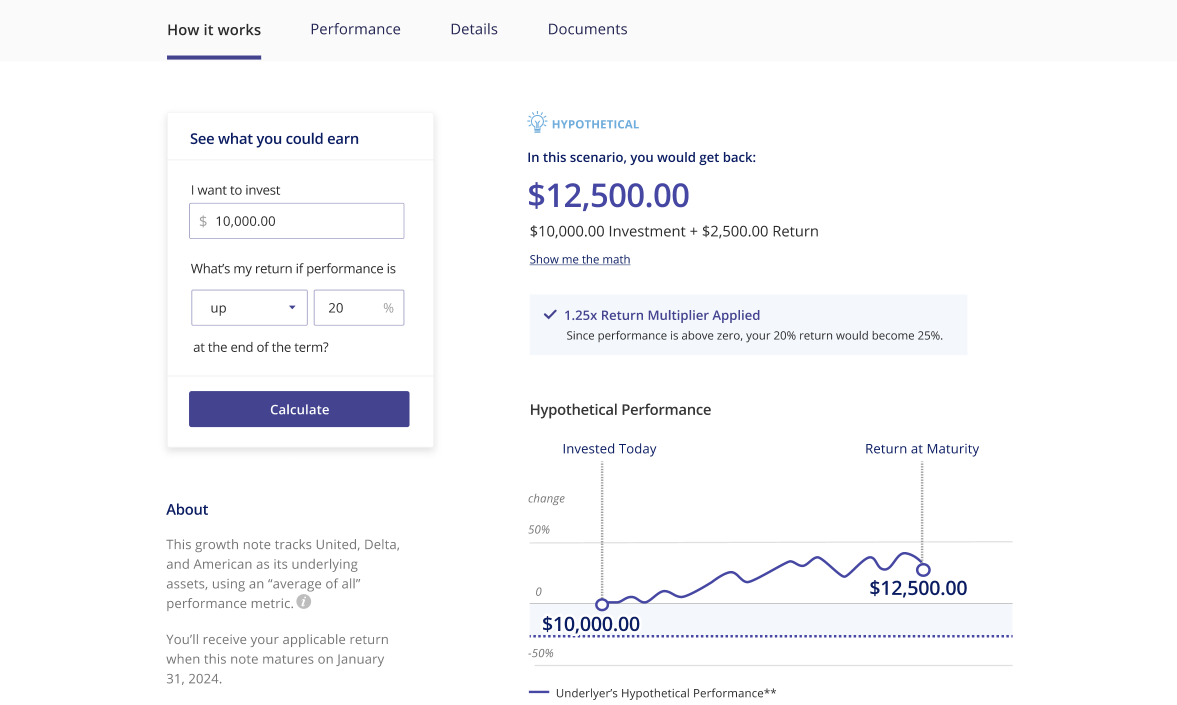Direct to Consumer Investment App
Bring previously inaccessible structured note products to the everyday investors
Challenge
Create a from-scratch, responsive web app for a fintech startup that allows retail investors to buy structured notes for as little as $1,000.
Jump ahead:
- My Role: Lead Designer
- My Team: 2 Product Managers, 2 front end developers, 4 backend developers
- Client: In-House Role
- Business Goal: Create diversity in existing product portfolio and generate new revenue streams
- Duration:1 year
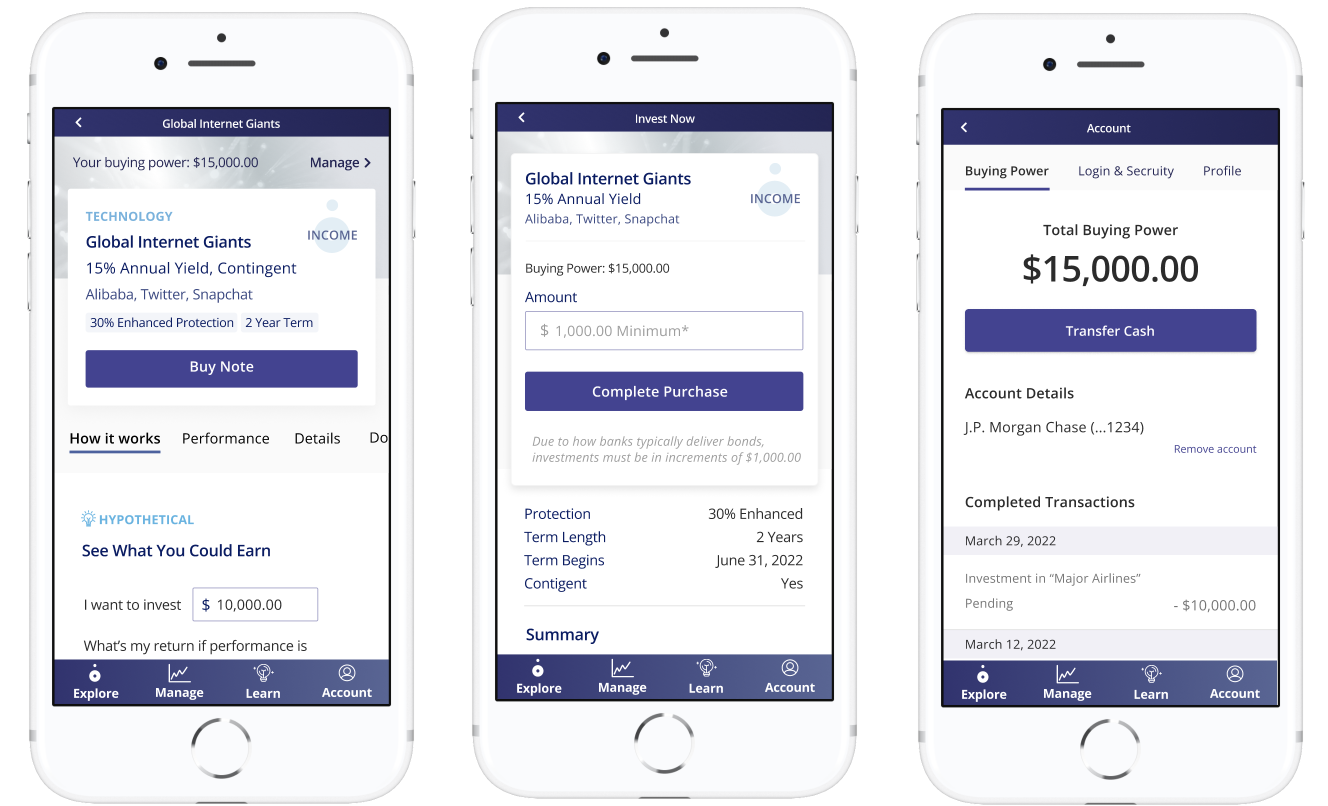
Why structured notes?
A structured note is a type of investment which allows you to invest in stocks and equities without direct market exposure. Generally a complex investment product, structured notes have historically been used exclusively by wealthy investors with a financial advisor. Because of this, a large majority of everyday investors are unfamiliar with structured notes. The startup sought to democratize this investment vehicle. How might we design the app in a way that makes notes feel approachable? How do we educate while maintaining people's attention?
Process
- Started with high-level business needs and proposed a vision
- Discovery phase focused on concept validation, market fit, and design iteration
- Created a Figma prototype to communicate vision to users, stakeholders, & developers
- Created detailed designs and worked with engineers to make product a reality

Discovery
Concept Exploration
I worked very closely with my product manager/structured note SME to create some early designs. I made three small design concepts that presented notes in different ways. What problems could this investment solve for people? How do people prioritize those types of problems in real life? I used these questions as north stars to think about ways to visualize the UI The below concepts used the idea of a weekly featured note and searchable, trending notes as jumping off points.
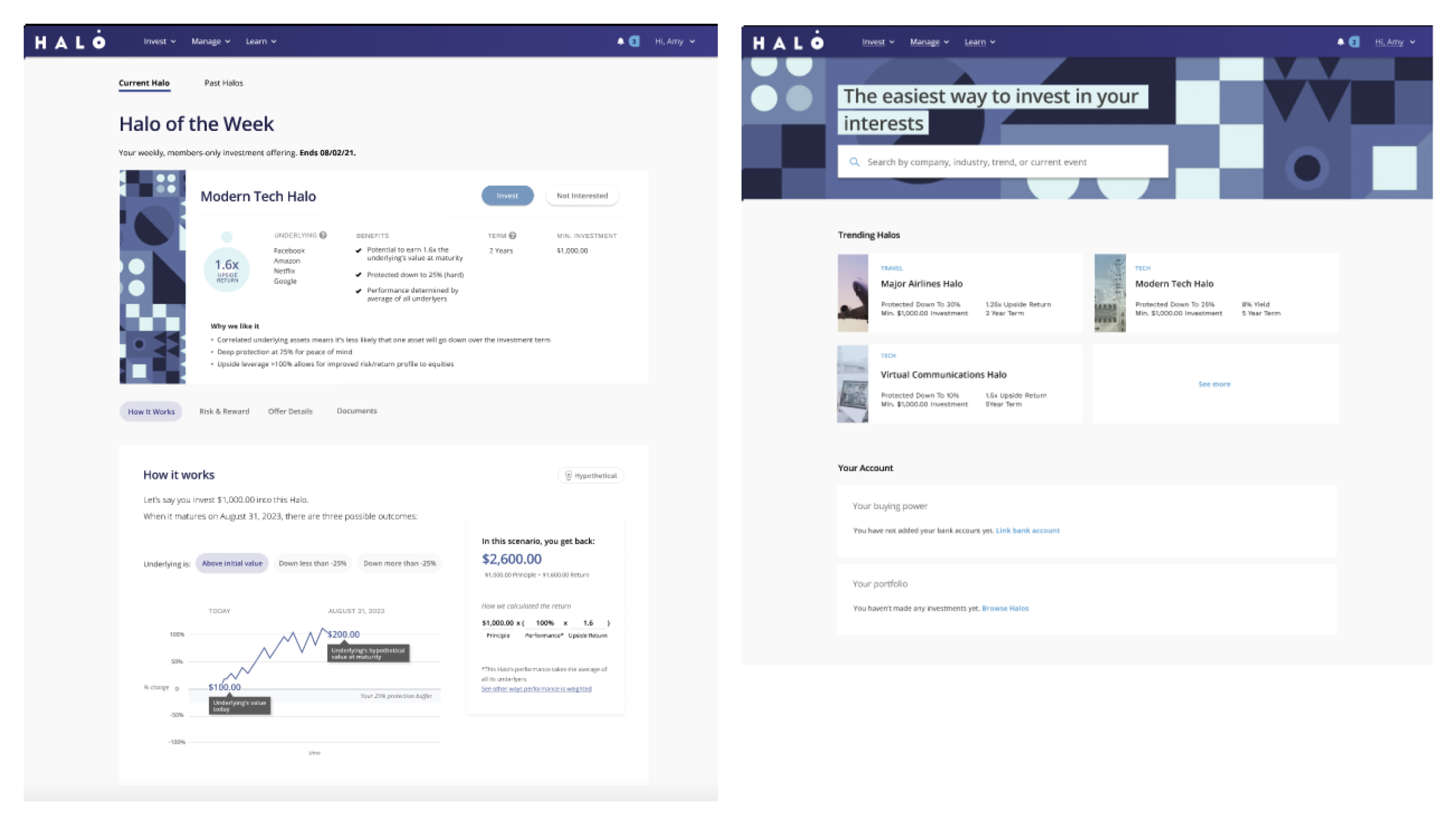
Research & Design Iteration
Once we had some ideas down, we began what was ultimately a very in-depth process of user testing and rapid prototyping. The bulk of this early user research occured over several months. Our goal (and eventual output) was to find a clear product vision, a product/market fit we were confident in, and clarity around who our future users might be.
- Discovery ran from approximately June - December 2021
- 43 interviews (participants sourced via userinterviews.com) using proto-personas as a guide
- Over 1,000 people surveyed (across 5 separate Maze studies)
- Countless design iterations
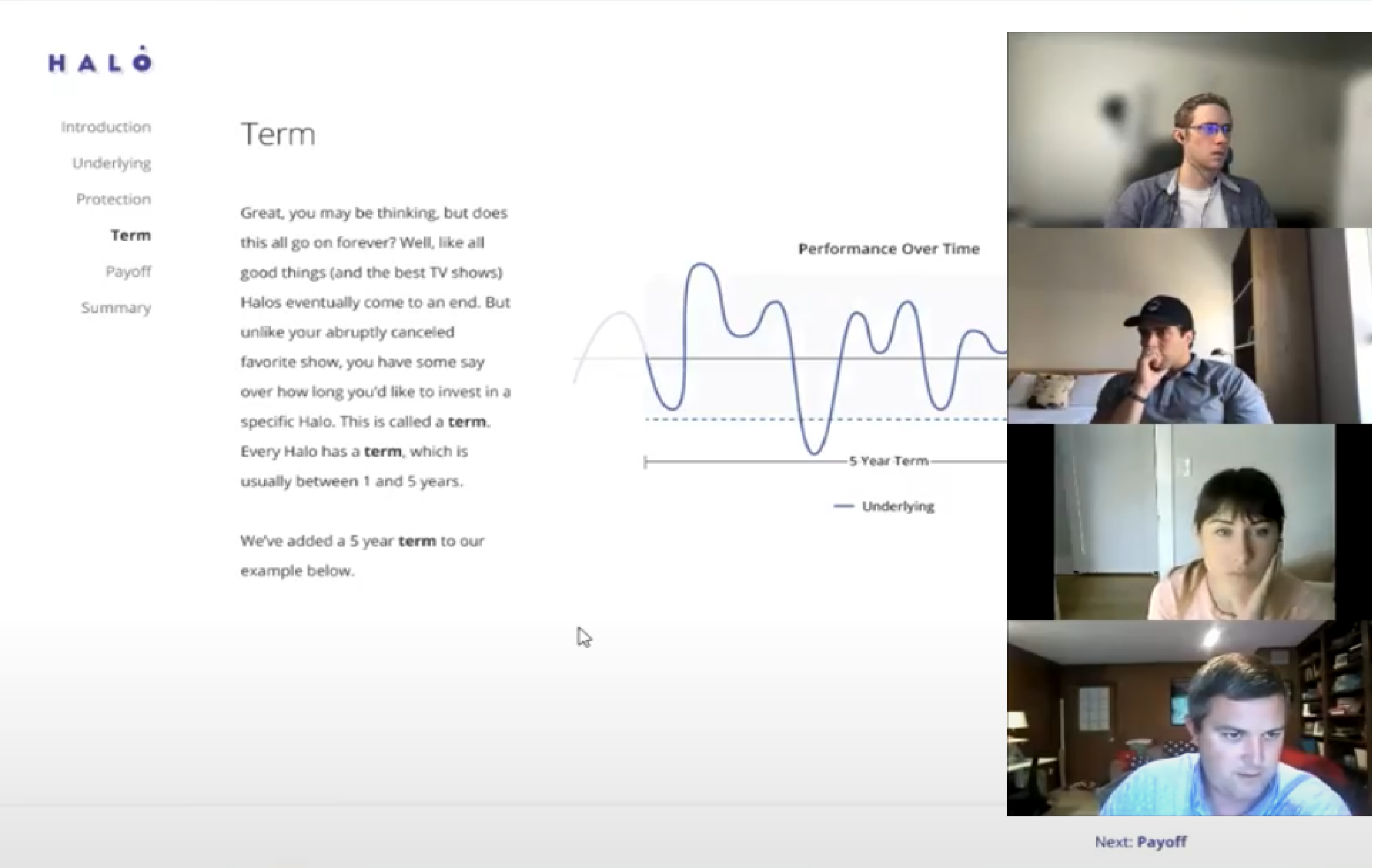
Test > Iterate > Repeat
I put a lot of care into how we were presenting complex concepts, studying what participants had trouble grasping and what we could do to simplify. I iterated or removed anything that missed the mark or wasn’t valuable enough. My goal was to make the design “invisible” and get participants to talk about structured notes. After a few rounds of testing/iterating, this exact phenomenon started to occur.
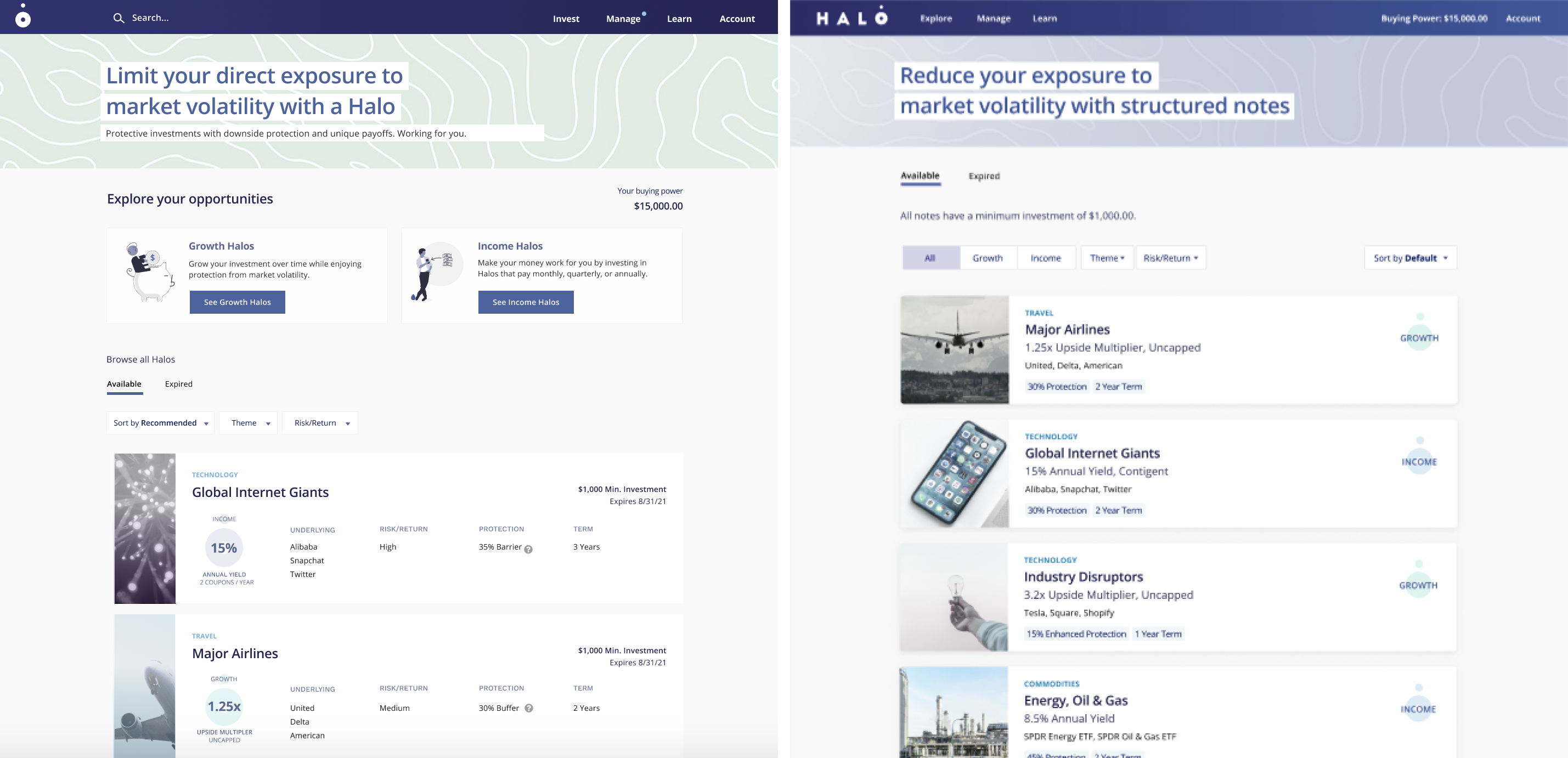
Our user research and iterations led us to the following conclusions, which shaped our final concepts:
- Notes presented as themed baskets (for example, FANG companies or environmental companies), which made notes feel more accessible to participants
- Learning module was tested for different lengths, presentation of content, and even the premise of needing a learning module at all (answer was yes)
- Teach users how notes work through interactive examples (“How it works” tab on note details screen), streamlined “Learn” module, tooltips and slide-out info panels
- limit the data on screen, focus on the narrative and key info
Updated Personas
We filled in the proto-personas with data-driven details we learned from testing. While we did not have real users yet, this seemed to be the demographic we would eventually be serving.
- Gender had no significant bearing on wants or behaviors
- Likely to invest $1-5k to start (self-reported via ~20+ interviewed participants)
- Risk tolerance has minimal bearing on how much they'd invest with Halo; $1k seen as small
- Interest in alternative investments is high across the board
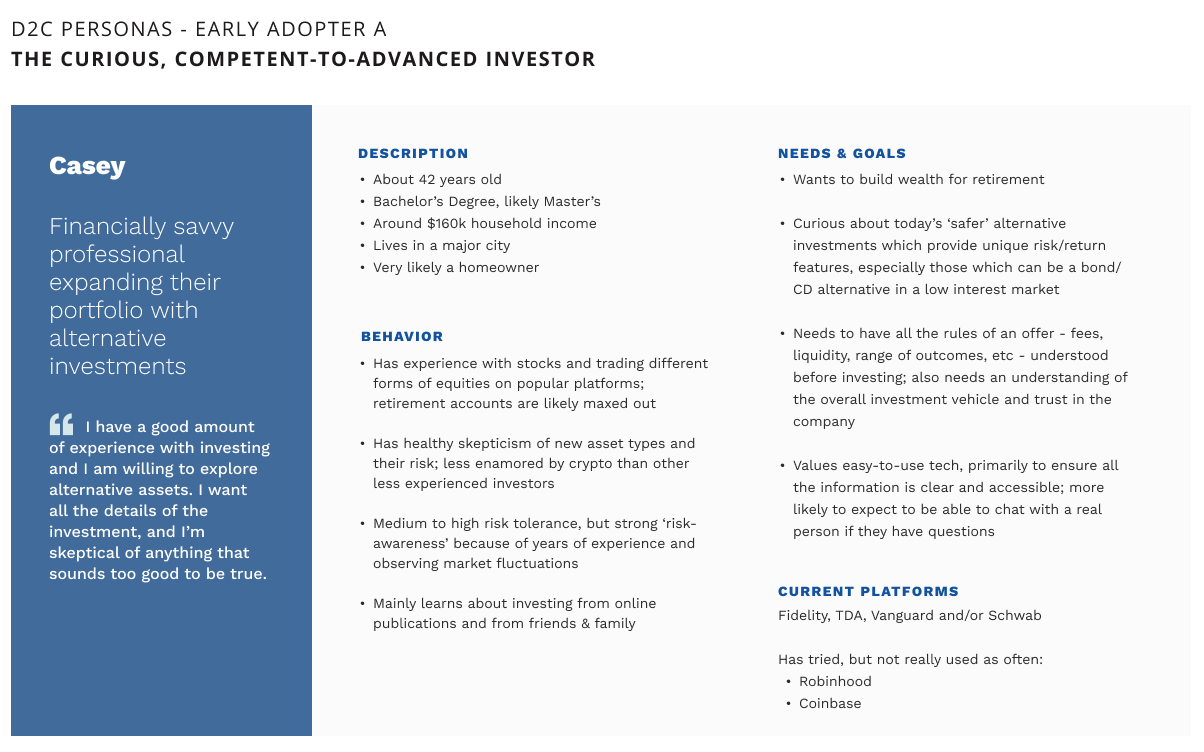
One of three updated personas
Final MVP designs
After nailing down our direction, we got to work get everything development ready. We worked with a team of six engineers to bring the vision to life.
Note: Both prototypes are robust and good representatives of the built app.

